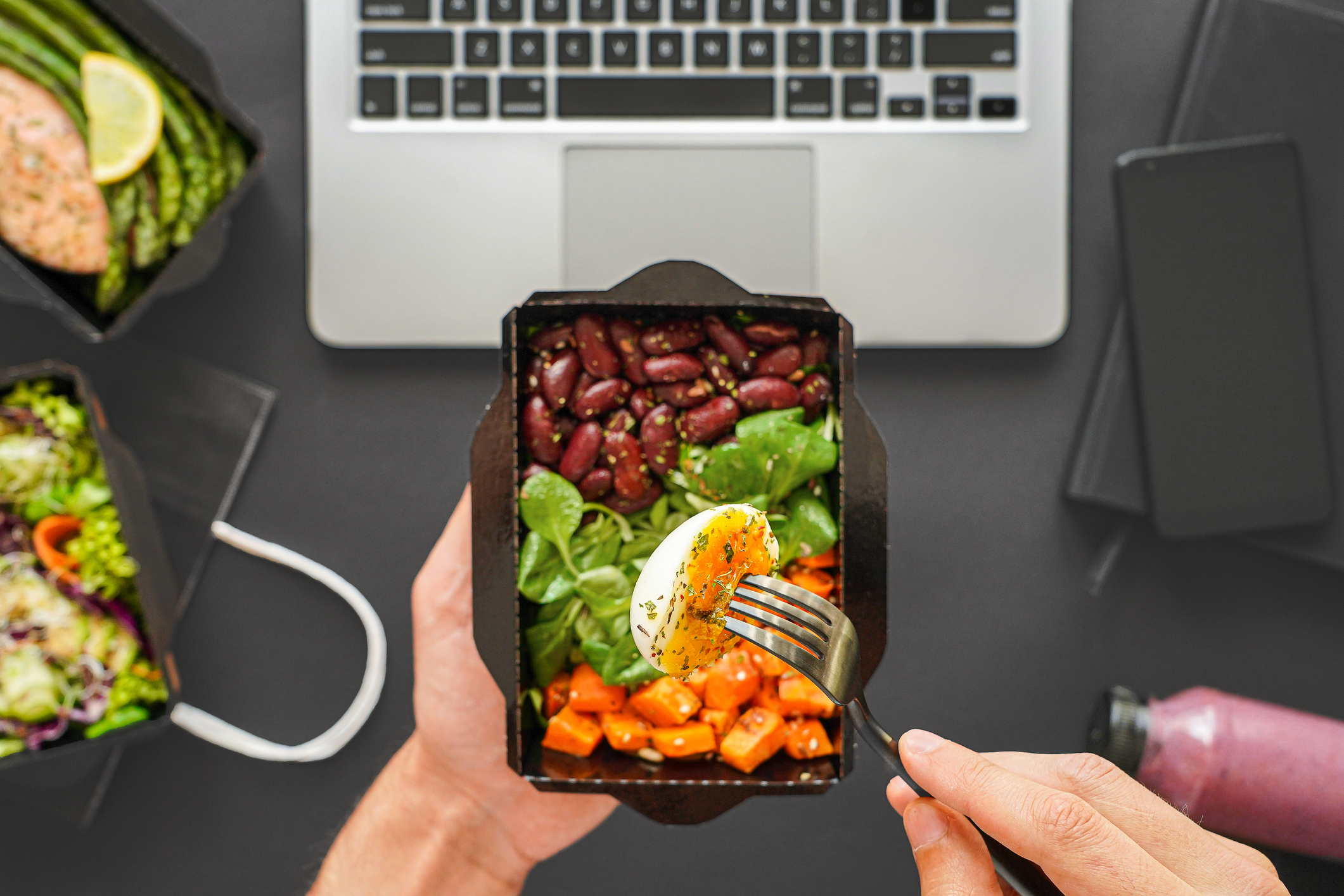
5 Ways Companies Are Safely Bringing Food Into The Office
posted on
To keep employees safe in the office, companies have implemented new protocols and guidelines, from adding floor markers to changing the workplace layout. When thinking about the lunch hour, there are additional challenges to consider. This includes:
- Staggering employees’ lunch hour to avoid overcrowded elevators and kitchens
- Encouraging employees to bring their own lunch from home
- Ordering lunch for employees to reduce outside exposure
Many companies have adopted or pivoted their office meal program to navigate through the challenges of facilitating a safe lunch environment. We’ve compiled a list of what we’ve seen from our clients, as well as tips from our food experts.
Here are the top 5 ways companies have adapted their meal programs during COVID-19 to ensure the health and safety of their team –
1. Switch to individually packaged meals

Switching to individually boxed meals may be an obvious decision. But for many companies who have been accustomed to buffet-style meals, a smooth transition is required to maintain good food hygiene. This involves communicating clear expectations to all in-office employees to order their own meals in advance and only ordering if they expect to be in the office.
Here’s an example of how one of our clients pivoted to individually packaged meals to align with their current health and safety priorities.
My client with 200 employees previously ordered sharing style buffet meals for their daily catering. Since the pandemic hit, they’ve had to re-think a lunch solution that would prioritize their team’s safety, reduce lunch line-ups, and eliminate food waste. Being organized was extremely important. With their Foodee ordering portal, their employees have a unique login and order their meal in advance if they plan on being in the office. This has also provided individuals with dietary restrictions more variety and customization with their lunches. ”
– Aashim, CSM, Toronto
2. Designate a delivery drop-off area
Every building and office has their own measures in place regarding visitors entering and exiting the premise. With the need for contact-less deliveries, it is important to communicate specific delivery protocols that align with the building and office’s policies. Designating a clear drop-off area ensures a smooth and safe delivery process.
Below is an example of how an office has a contactless approach to meal deliveries.
Something that our clients really appreciate is our ability to facilitate safe deliveries, in accordance to the building’s protocols. One of my clients has their own delivery drop-off bag placed near the reception area. When the driver arrives, they transfer all the meals from their bag into the office bag, and someone from the team takes their bag and sets up the meals in the lunch area.”
– Sara, CSM, Vancouver
3. Schedule multiple deliveries for staggered lunchtimes

Staggering lunch times have been especially prominent in large offices to avoid overcrowding of lunch areas. Many companies assign different lunch times to two groups, along with scheduling two separate lunch deliveries. For example, lunch times are split between 11:30AM-12:30PM and 12:30PM-1:30PM, with each group’s meals delivered at their respective times. This ensures that social distancing is maintained, and only those assigned to that group receive their personal meal at the correct time (and that it is still warm)!
4. Phased or rotating approach to returning to the office
We have seen two common approaches in returning to the office.
The phased return starts with bringing back 25% of employees into the office. This is decided on 2 criteria; either 1) specific roles need to be in the office to accomplish their task or 2) specific employees volunteer to return to the office.
The rotating approach involves different teams coming into the office on different days, on a rotating schedule. Though both approaches are beneficial, this presents additional challenges to the office manager when it comes to lunch catering.
Many companies with either approach have leveraged our Teams and Users feature, where specific teams are only invited to order on specific days. This prevents team members from mistakenly ordering on the wrong day.
Offices with a rotating or phased approach have easily managed office catering as individuals order their own meal. Those who will be in the office order their meals ahead of time, and the company only pays for those who have ordered. This reduces the amount of guesstimation required and eliminates food waste associated with it ”
– Brittany, CSM, Austin
5. Socially distanced meet-ups

Although this isn’t necessarily “in the office”, there is a common theme among companies who are still working remotely but want to occasionally meet-up. We’ve facilitated lunch delivery to parks, where team members have socially distanced picnics with their Foodee-delivered meal. This helps remote teams stay connected in a safe environment and fosters company culture that we’ve all been missing for the past few months.
Looking for safely delivered corporate catering to your office?
Our team has curated all the best local restaurants in your city below:
- Corporate catering in Austin, TX
- Corporate catering in Boston, MA
- Corporate catering in Boulder, CO
- Corporate catering, Cambridge, Greater Boston, MA
- Corporate catering in Chicago, IL
- Corporate catering in Denver, CO
- Corporate catering in Minneapolis, MN
- Corporate catering in New York City, NY
- Corporate catering in San Francisco, CA
- Corporate catering in Washington, D.C.
- Corporate catering in Toronto, Canada
- Corporate catering in Vancouver, Canada
Order corporate catering with Foodee
Find local restaurants in your city and schedule a delivery for your team today.
Order NowFiled Under: Food For Thought Food For Thought, Foodee HQ